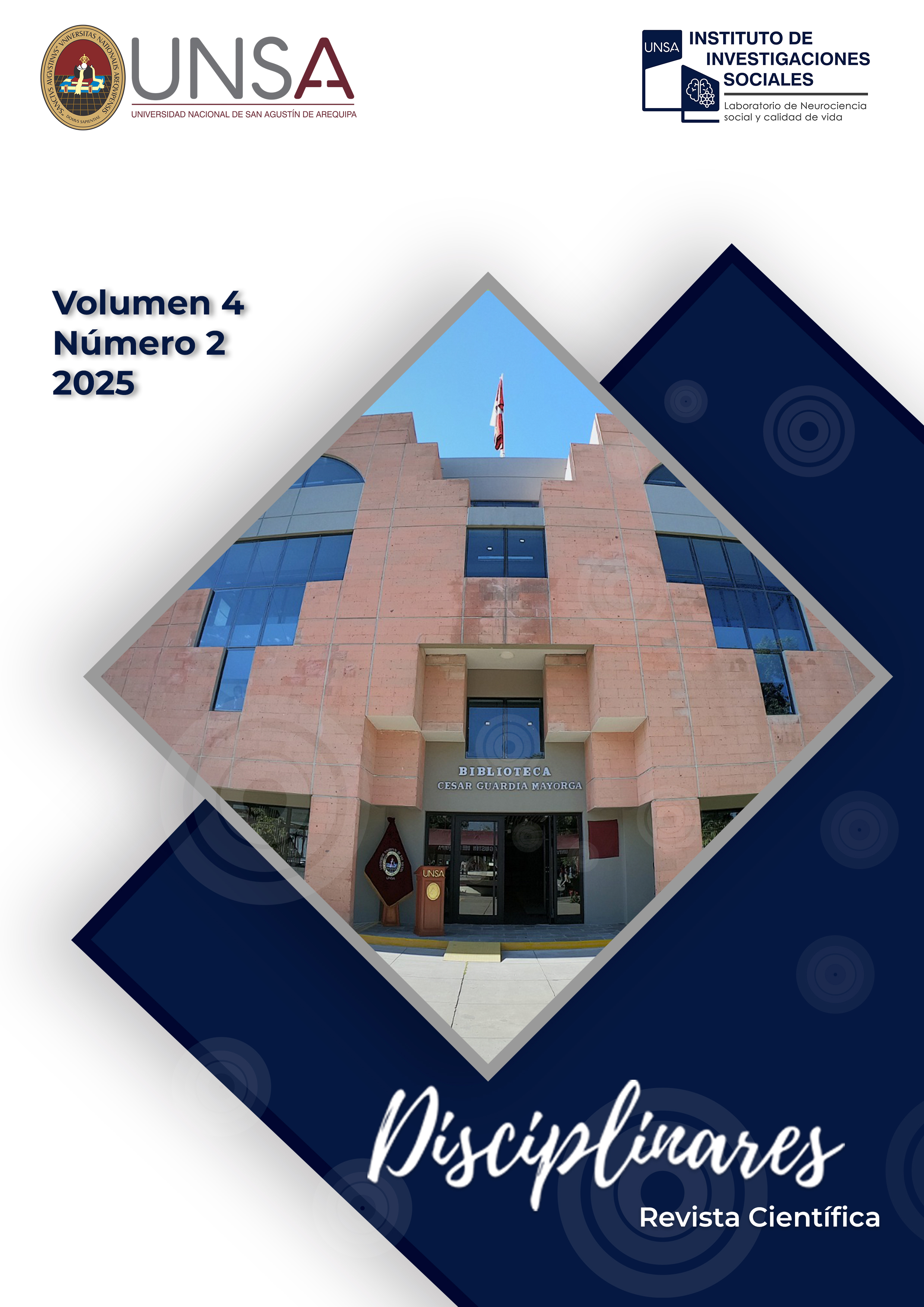Estrategias de Ciberseguridad en la Reducción de Incidentes en Entornos de Trabajo Remoto: Una Revisión Sistemática
DOI:
https://doi.org/10.71727/disciplinares.v4i2.336Palabras clave:
Ciberseguridad, Trabajo remoto, Autenticación multifactor, Capacitación en ciberseguridad, Inteligencia artificialResumen
INTRODUCCIÓN: El incremento del trabajo remoto ha expuesto a las organizaciones a mayores riesgos de ciberseguridad, generando la necesidad de estrategias efectivas para mitigar incidentes. Este estudio aborda el impacto de diversas medidas de ciberseguridad en la reducción de riesgos en este contexto. MÉTODO: Se realizó una revisión sistemática de la literatura utilizando la metodología PRISMA. Se seleccionaron y analizaron 19 estudios relevantes de bases de datos reconocidas, centrados en autenticación multifactorial, capacitación, herramientas de monitoreo basadas en inteligencia artificial y diferencias sectoriales en la implementación de medidas de seguridad. RESULTADOS: Los hallazgos destacan que la autenticación multifactorial reduce los accesos no autorizados hasta en un 95% en sectores altamente tecnificados, mientras que las herramientas basadas en inteligencia artificial logran tasas de detección temprana superiores al 90%. Asimismo, la capacitación continua en ciberseguridad disminuye los errores humanos hasta en un 50%, fomentando una cultura organizacional más segura. Sin embargo, sectores con recursos limitados, como el educativo, enfrentan barreras significativas para implementar estas soluciones. DISCUSIÓN: Este análisis resalta la importancia de combinar tecnologías avanzadas con programas de formación continua y políticas inclusivas para cerrar las brechas sectoriales. Además, se enfatiza la necesidad de desarrollar tecnologías accesibles y marcos regulatorios sólidos para garantizar una respuesta efectiva frente a amenazas futuras.
Citas
Application of artificial intelligence in computer network security,. (s/f). https://doi.org/10.1088/1742-6596/1865/4/042039.
Avarias, J., Leon, F., Carrasco, R., Lobos, J., Ibsen, J., Achermann, C., Parra, J., & Soto, R. (2024). Adding cybersecurity in JAO organizational culture: do’s and dont’s. En L. J. Storrie-Lombardi, C. R. Benn, & A. Chrysostomou (Eds.), Observatory Operations: Strategies, Processes, and Systems X (p. 12). SPIE.
Bispham, M., Creese, S., Dutton, W. H., Esteve-González, P., & Goldsmith, M. (2022). An exploratory study of cybersecurity in working from home: Problem or enabler? Journal of Information Policy, 12, 353–386. https://doi.org/10.5325/jinfopoli.12.2022.0010
Čergeť, M., & Hudec, J. (2023). Cyber-Security Threats Origins and their Analysis. Acta polytechnica Hungarica, 20(9), 23–41. https://doi.org/10.12700/aph.20.9.2023.9.2
Feng, X., Feng, Y., & Dawam, E. S. (2020). Artificial intelligence cyber security strategy. 2020 IEEE Intl Conf on Dependable, Autonomic and Secure Computing, Intl Conf on Pervasive Intelligence and Computing, Intl Conf on Cloud and Big Data Computing, Intl Conf on Cyber Science and Technology Congress (DASC/PiCom/CBDCom/CyberSciTech).
Flores, C., Gonzalez, J., Kajtazi, M., Bugeja, J., & Vogel, B. (2023). Human factors for cybersecurity awareness in a remote work environment. Proceedings of the 9th International Conference on Information Systems Security and Privacy, 608–616.
Glorin, S. (2021). A descriptive study on cybersecurity challenges of working from home during COVID-19 pandemic and a proposed 8 step WFH cyber-attack mitigation plan. Communications of the IBIMA, 1–7. https://doi.org/10.5171/2021.589235
Jakimoski, K. (2023). Automation Improvement in Cyber Risk Management. 2023 International Conference on Software, Telecommunications and Computer Networks (SoftCOM), 1–6.
Kanter-Ramirez, C. A., Lopez-Leyva, J. A., Beltran-Rocha, L., & Ferková, D. (2020). Framework for the optimal design of an information system to diagnostic the enterprise security level and management the information risk based on ISO/IEC-27001. En Lecture Notes of the Institute for Computer Sciences, Social Informatics and Telecommunications Engineering (pp. 3–13). Springer International Publishing.
Klein, G., & Zwilling, M. (2024). The weakest link: Employee cyber-defense behaviors while working from home. Journal of Computer Information Systems, 64(3), 408–422. https://doi.org/10.1080/08874417.2023.2221200
Leroy, I., & Zolotaryova, I. (2023). Insights for economic security: Recovery strategies from cyber-attacks. 2023 13th International Conference on Dependable Systems, Services and Technologies (DESSERT), 1–7.
Mandal, S., Khan, D. A., & Jain, S. (2021). Cloud-based zero trust access control policy: An approach to support work-from-home driven by COVID-19 pandemic. New Generation Computing, 39(3–4), 599–622. https://doi.org/10.1007/s00354-021-00130-6
Nyarko, D. A., & Fong, R. C.-W. (2023). Cyber security compliance among remote workers. En Advanced Sciences and Technologies for Security Applications (pp. 343–369). Springer International Publishing.
Pranggono, B., & Arabo, A. (2021). COVID‐19 pandemic cybersecurity issues. Internet Technology Letters, 4(2). https://doi.org/10.1002/itl2.247
Sstla, V., Kolli, V., & Voggu, L. (2020). Predictive model for network intrusion detection system using deep learning. Revue d intelligence artificielle, 34(3), 323–330. https://doi.org/10.18280/ria.340310
Sun, N., Zhang, J., Gao, S., Zhang, L. Y., Camtepe, S., & Xiang, Y. (2020). Data analytics of crowdsourced resources for cybersecurity intelligence. En Lecture Notes in Computer Science (pp. 3–21). Springer International Publishing.
Whitty, M. T., Moustafa, N., & Grobler, M. (2024). Cybersecurity when working from home during COVID-19: considering the human factors. Journal of Cybersecurity, 10(1). https://doi.org/10.1093/cybsec/tyae001
Working from home: Cybersecurity in the age of covid-19. (2020). Issues In Information Systems. https://doi.org/10.48009/4_iis_2020_234-246
Wright, T., Ruhwanya, Z., & Ophoff, J. (2024). Using the theory of interpersonal behaviour to explain employees’ cybercrime preventative behaviour during the pandemic. Information and Computer Security, 32(4), 436–458. https://doi.org/10.1108/ics-11-2023-0228




